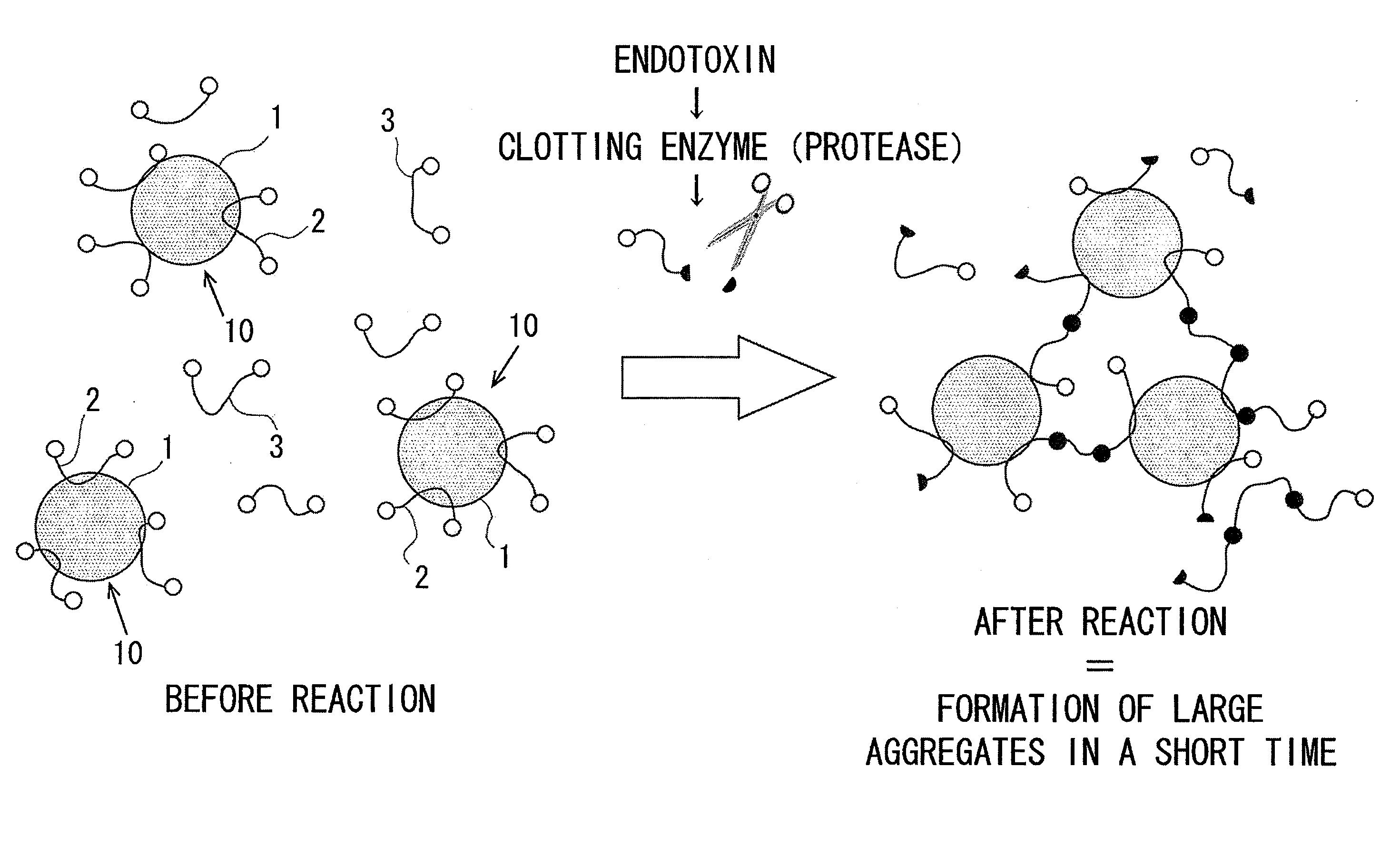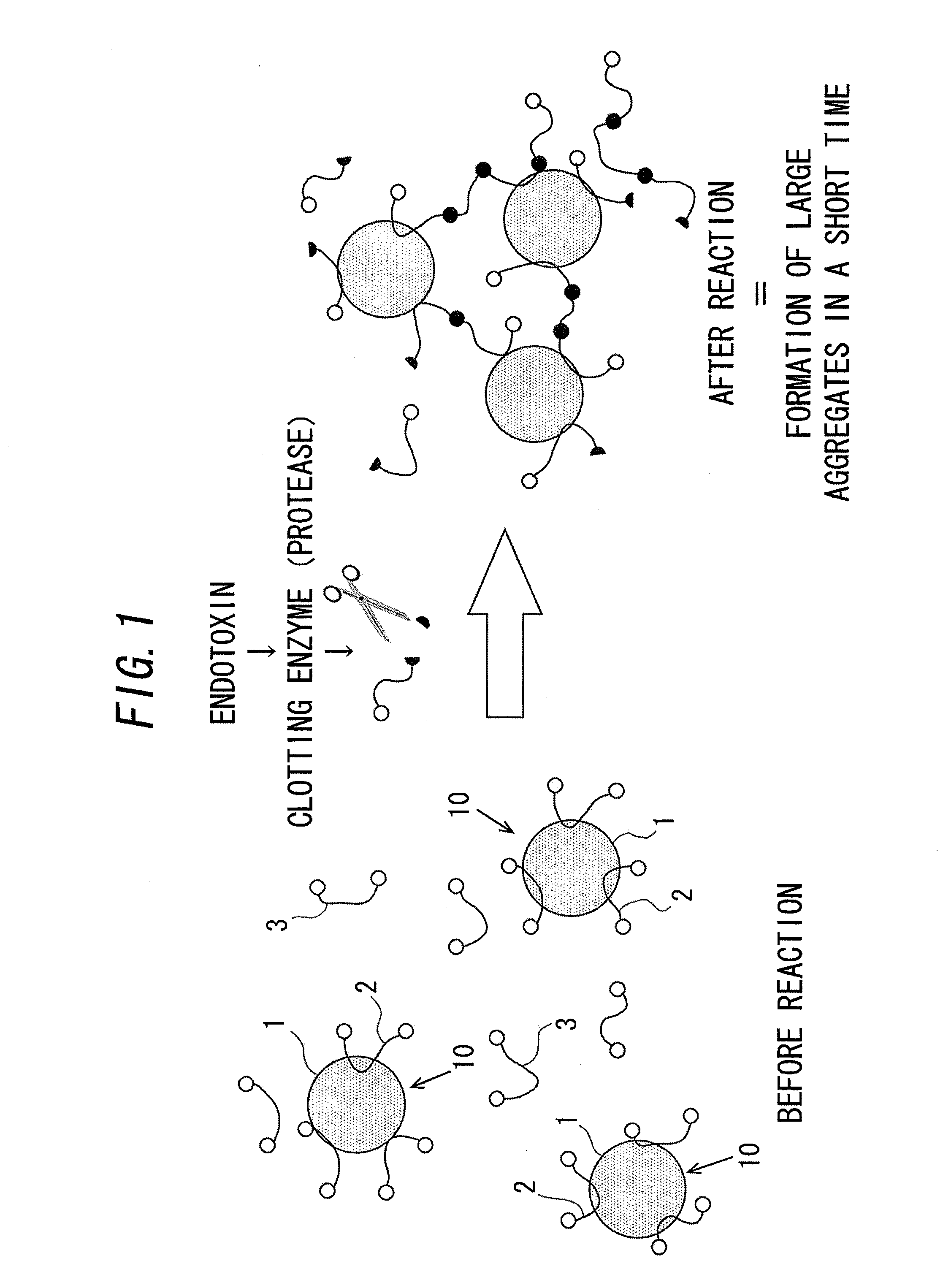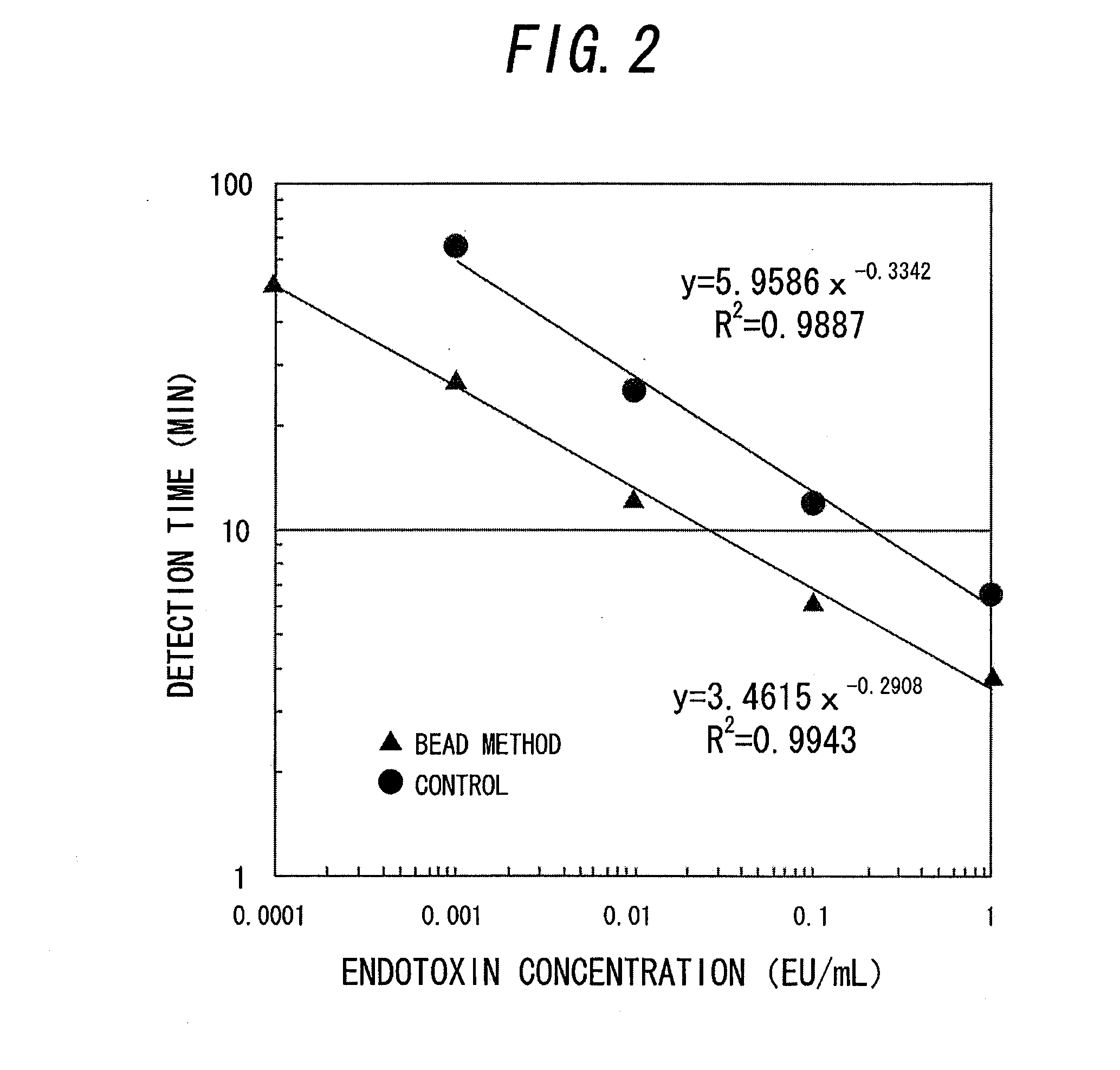Measurement method for physiologically active substance of biological origin, and reagent kit for measurement
a biological origin and physiological activity technology, applied in the field of physiological activity substances of biological origin, can solve the problems of easy damage to the method, turbidimetric methods may require a very long reaction time, and endotoxins may induce severe side effects such as fever and shock, so as to improve the detection accuracy and facilitate the preparation of reagents.
- Summary
- Abstract
- Description
- Claims
- Application Information
AI Technical Summary
Benefits of technology
Problems solved by technology
Method used
Image
Examples
production example 1
Production of LAL-Bound Bead for Light Transmittance Measurement
[0077]Spherical alumina particles (ASFP-20, manufactured by DENKI KAGAKU KOGYO KABUSHIKI KAISHA, average particle diameter: 0.3 μm) were subjected to a dry heat treatment (at 250° C. for 3 hours) and the contaminated endotoxin was inactivated by heat. The spherical alumina particles can be sterilized by hot air at high temperatures and thus the endotoxin can be completely inactivated at this stage.
[0078]Subsequently, the spherical alumina particles were dispersed in distilled water for injection at a concentration of 20 mg / mL. The dispersion liquid was centrifuged at 1000 rpm for 3 minutes, and clumps of the particles or large-sized particles were centrifuged and removed. Then, the dispersion liquid of spherical alumina particles was added in an amount of 300 μL per bottle of a limulus reagent (HS-T, manufactured by Wako Pure Chemical Industries, Ltd.,) to dissolve the limulus reagent. The resulting solution was stirred...
production example 2
Production of LAL-Bound Bead for Laser Light Scattering Particle Counting Method
[0083]Alumina particles (ALuC, manufactured by Aerosil Co., Ltd., primary particle diameter: 0.03 μm) were subjected to a dry heat treatment (at 250° C. for 3 hours) and the contaminated endotoxin was inactivated by heat. Subsequently, the particles were dispersed in distilled water for injection at a concentration of 10 mg / mL. The dispersion liquid was centrifuged at 3000 rpm for 1 minute, and clumps of the particles or large-sized particles were centrifuged and removed. Then, the dispersion liquid of microparticles which was 2-fold diluted with distilled water for injection was added in an amount of 100 μL per bottle of a limulus reagent (HS-T, manufactured by Wako Pure Chemical Industries, Ltd.,) to dissolve the limulus reagent.
[0084]The mixture was stirred and blended in a vortex mixer. Thereafter, the resulting mixture was heat-treated in an Aluminum Block Heater at 60° C. for 20 minutes to allow pr...
production example 3
Endotoxin-Free Glass Vessel
[0085]In the light transmittance measuring method, a special-purpose glass vessel having φ6 mm and length of 50 mm equipped with a stainless steel stirring bar for stirring a sample (φ0.75 mm and 3.5 mm in length) was used. On the other hand, in the laser light scattering particle counting method, a special-purpose glass vessel having φ7 mm and length of 50 mmm equipped with a stainless steel stirring bar for stirring a sample (φ1 mm and 5 mm in length) was used. An opening of the vessel was covered with aluminum foil, and further, each 20 of the vessels were packaged with aluminum foil and contained in a dried and heat-treated iron can, and heat-treated at 250° C. for three hours so as to inactivate endotoxin.
[0086]Subsequently, the measurement of endotoxin using the LAL-bound bead reagent prepared by using the spherical alumina particles produced in the above manner will be described.
PUM
| Property | Measurement | Unit |
|---|---|---|
| pH | aaaaa | aaaaa |
| pH | aaaaa | aaaaa |
| pH | aaaaa | aaaaa |
Abstract
Description
Claims
Application Information
 Login to View More
Login to View More - R&D
- Intellectual Property
- Life Sciences
- Materials
- Tech Scout
- Unparalleled Data Quality
- Higher Quality Content
- 60% Fewer Hallucinations
Browse by: Latest US Patents, China's latest patents, Technical Efficacy Thesaurus, Application Domain, Technology Topic, Popular Technical Reports.
© 2025 PatSnap. All rights reserved.Legal|Privacy policy|Modern Slavery Act Transparency Statement|Sitemap|About US| Contact US: help@patsnap.com



